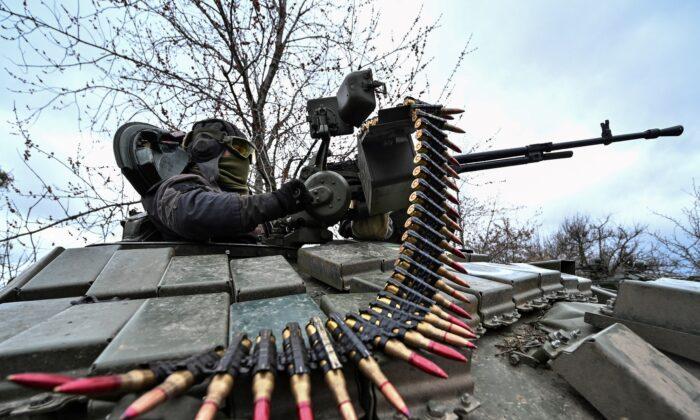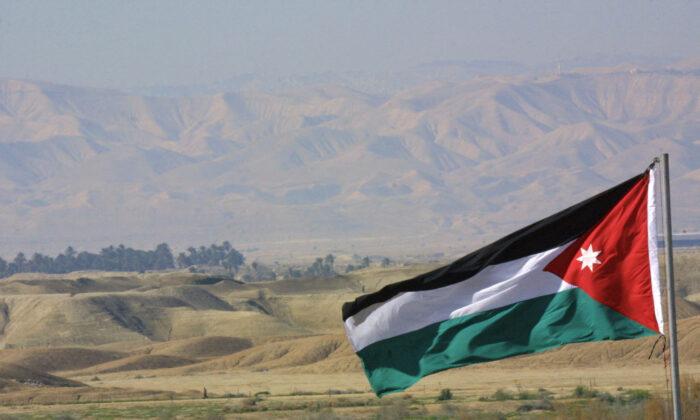Ukrainian forces are staging regular attacks on the Russian-held eastern bank of the Dnipro River in the Kherson region, according to a top Ukrainian regional official.
“Our military visit the [eastern] bank very often, conducting raids,” Yuriy Sobolevskiy, deputy head of Kherson’s Kyiv-appointed regional administration, said in televised comments on April 25.
“The Ukrainian armed forces are working ... very effectively,” he said.
Russian forces captured most of Kherson and three other regions in the opening weeks of Moscow’s invasion of Ukraine, now in its second year.
In November 2022, however, they withdrew from northwestern Kherson to more defensible positions along the eastern bank of the Dnipro.
According to Sobolevskiy, Kyiv’s ongoing raids on Russian positions “will come as they did on the [western] bank ... when, thanks to a complex and long operation, they [Ukrainian forces] were able to liberate [Ukranian] territories with minimal losses.”
The cross-river attacks, he said, are aimed at reducing the combat-effectiveness of Russian forces that remained dug in along the eastern bank.
Earlier this week, Vladimir Saldo, the Moscow-appointed head of Russia-held Kherson, denied reports that Ukrainian forces had established a beachhead on the eastern bank of the river.
“There is no enemy foothold on the left bank of the Dnipro ... our military completely controls that territory,” Saldo said via Telegram on April 23.
The Epoch Times was unable to verify claims made by either side.
Nevertheless, speculation has mounted in recent days—based on Russian and Ukrainian reports—that Kyiv’s long-awaited springtime offensive may have begun.

Mixed Signals
Earlier this month, scores of classified U.S. military documents, several of which pertain to the planned spring offensive, were leaked online.Some of the documents appeared to suggest that Kyiv was desperately short of Western arms and equipment, raising doubts as to whether the anticipated offensive would materialize.
After the leaks began making headlines, Ukrainian Prime Minister Denys Shmyhal hinted that the counteroffensive could be postponed until later this summer.
But on April 24, The New York Times cited one leaked Pentagon document that purportedly states that 12 Ukrainian brigades, each with some 4,000 troops, would be ready for combat by the end of this month.
It remains unclear, however, where the offensive’s primary thrust—if there is one—will focus.
There have been indications that the counteroffensive would seek to relieve Ukrainian forces in the Donetsk region, where they face superior Russian firepower near the flashpoint towns of Bakhmut and Avdiivka.
Other indications suggest the offensive could take aim at the southern, Russian-held Zaporizhzhia and Kherson regions in hopes of severing Russia’s land corridor to Crimea, which Moscow annexed in 2014.
The NY Times quoted Alexander Vershbow, a top U.S. diplomat and former NATO deputy secretary general, as saying that the vaunted counteroffensive would likely determine the conflict’s outcome.
The offensive, he said, would likely decide “whether there is going to be a decent outcome for the Ukrainians, in terms of recovering territory on the battlefield and creating ... leverage to get some kind of negotiated settlement.”

Russians Confirm Frontline Buildups
It remains to be seen whether Kyiv’s springtime offensive has begun in earnest.Russian sources, for their part, have appeared to confirm substantial Ukrainian military buildups in several places along the roughly 680-mile front line.
Vladimir Rogov, a pro-Moscow official in Zaporizhzhia, recently claimed that 12,000 fresh Ukrainian troops had been deployed near the town of Hulyaipole.
“[Ukrainian reinforcements] are now right along the line of contact,” he told Russia’s TASS news agency on April 24.
On the same day, Russia’s defense ministry said that Russian “assault teams” had beaten back repeated Ukrainian attempts to recover lost ground in Donetsk.
The ministry usually uses the term “assault teams” to refer to fighters of the Wagner Group, a Kremlin-linked military company that’s spearheading much of the fighting.
“Assault teams continue combat operations in the western districts of the city of Artyomovsk,” a ministry spokesman said, using the Russian name for Bakhmut.
Backed by aircraft and artillery, Russian ground forces had successfully thwarted several attempts by Ukrainian forces “to counter-attack on the flanks,” he said.
A vital Ukrainian transport hub, Bakhmut has remained the scene of intense fighting for months. Russian forces are now believed to hold about 90 percent of the war-torn city.
In September 2022, Russia effectively annexed the Donetsk, Luhansk, Kherson, and Zaporizhzhia regions after holding controversial referendums. -Kyiv and its allies decry the move as an illegal land grab and demand that Russia relinquish all seized territories, including Crimea.
Moscow claims the annexations were necessary to protect Russian speakers in eastern Ukraine and halt the eastward expansion of NATO.





